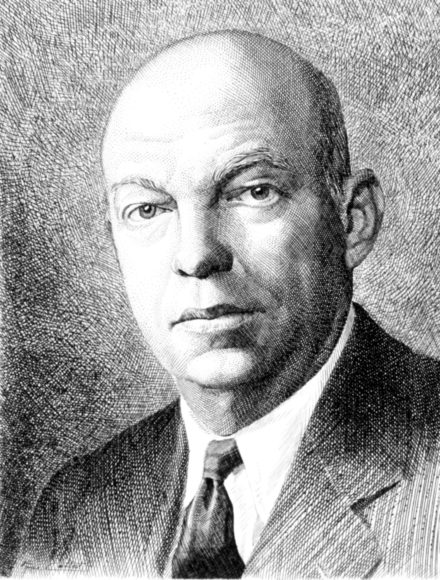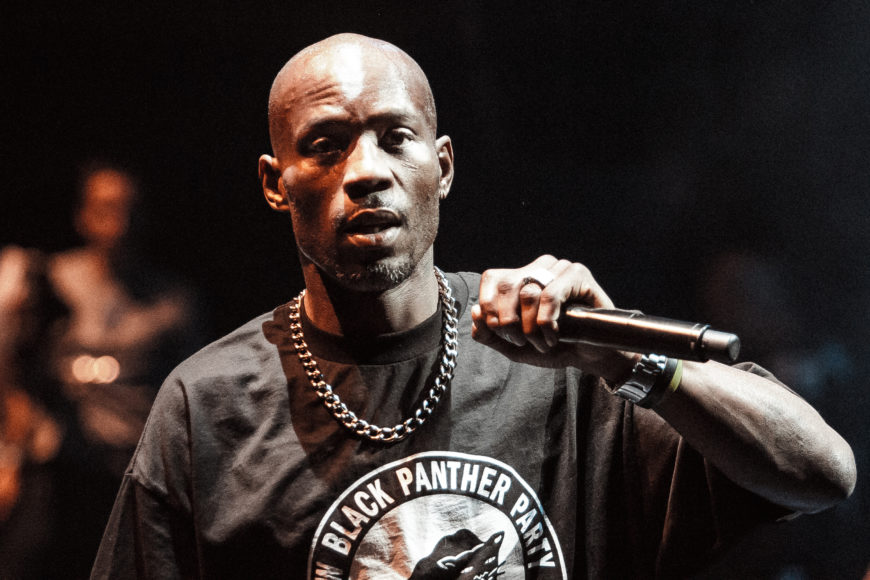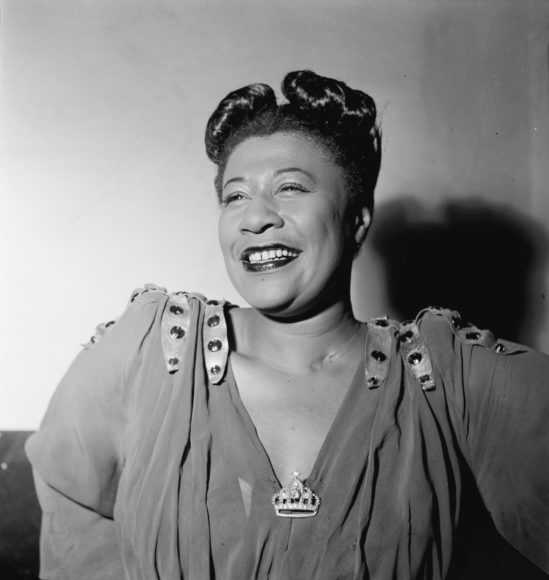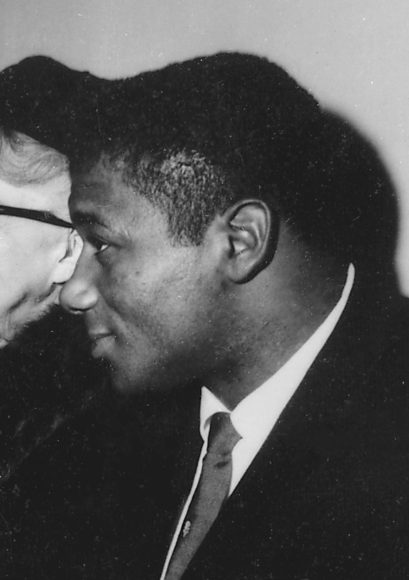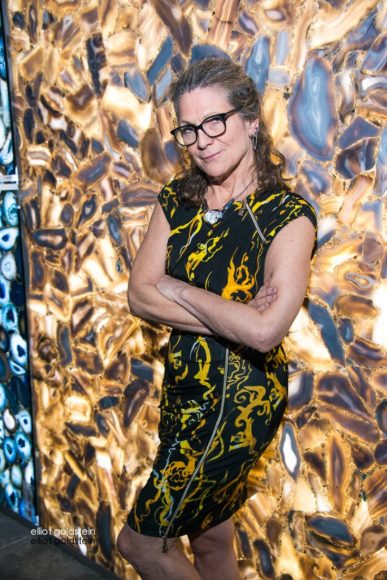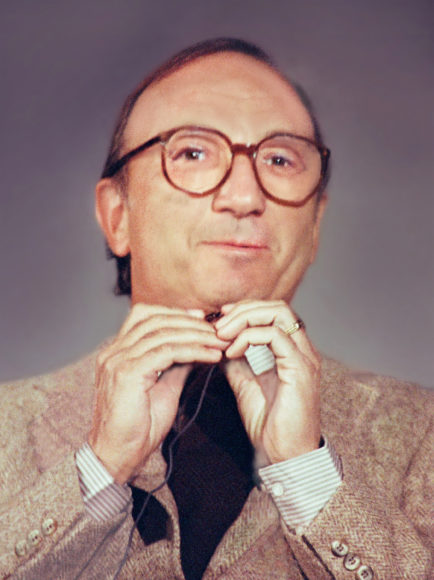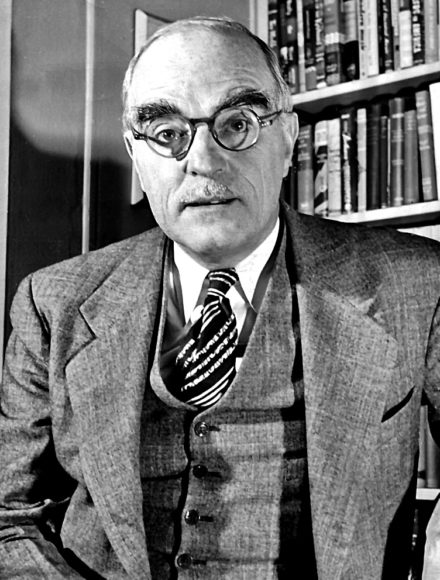In “What’s in the Box,” a 1964 “Twilight Zone” episode that’s all about self-fulfilling prophecies and our love-hate relationship with TV, unfaithful cab driver Joe Britt (William Demarest) excuses his lateness in returning home by telling his suspicious wife that he had to drive one of his fares to Yonkers.
From such quirky mentions (the city is the title character’s hometown in the 1925 pop song “If You Knew Susie”) to more thoughtful explorations (the 2015 miniseries “Show Me a Hero,” about Yonkers housing desegregation crisis), the city has been a wellspring for some of our most resonant works as well as some of our finest artists, civic leaders, athletes and inventors.
Here are just a few of the cultural figures who have called Yonkers muse and/or home on a path to success that was often fraught with challenges:
Edwin Howard Armstrong — The electrical engineer/inventor who gave us FM radio and helped develop the superheterodyne receiver system grew up sickly and isolated in his family’s Queen Anne-style home at 1032 Warburton Ave. in Yonkers, overlooking the Hudson River. It was there, however, that he conducted many of the experiments that would lead to later breakthroughs, as recounted in Ken Burns’ 1992 documentary “Empire of the Air.” His years of litigation against onetime financial backer RCA led to his death by suicide in 1954 at age 63.
James Blake — The Yonkers native and later Fairfield resident, subject of a December 2017 WAG profile, overcame scoliosis and a broken neck to triumph on the tennis court, turning in a key performance in the United States’ victory over Russia for the Davis Cup in 2007. Blake was the Comeback Player of the Year in 2005 and three years later was named the Arthur Ashe Humanitarian of the Year. Racially profiled during the 2015 US Open in an incident that garnered national attention, Blake wrote “Ways of Grace: Stories of Activism, Adversity, and How Sports Can Bring Us Together,” which describes what happened and his subsequent decision to become an advocate for social justice.
Mary J. Blige — The Grammy Award-winning, multiplatinum-selling singer, songwriter and actress grew up in the Scholbohm Housing Projects in Yonkers, where she was part of the band Pride with drummer Eddie D’Aprile. (It was her impromptu 1988 recording of Anita Baker’s “Caught Up in the Rapture” at the Galleria in White Plains that proved the springboard for her career.) She would go on to become the first person nominated for an Oscar in both acting and songwriting for the 2017 film “Mudbound”, which featured the song “Mighty River.” The documentary “Mary J. Blige My Life” was released on Amazon Prime Video this year.
Mary Calvi — As our own Jeremy Wayne discovered when he profiled her for the cover of our November 2019 issue, Calvi has been a triple threat as a 12-time Emmy Award-winning journalist, co-anchor of “CBS2 This Morning” and “CBS2 At Noon” at WCBS-TV in Manhattan; first lady of Yonkers (as the wife of Mayor Mike Spano); and author of the well-received novel “Dear George, Dear Mary,” about the star-crossed love of George Washington and the Tory heiress Mary Philipse, whose family once owned all the land from Spuyten Duyvil to the Croton River and across to the Bronx River. It was at her husband’s 2012 inauguration at Philipse Manor Hall that Calvi was inspired by the other Mary’s portrait to tell her story, which but for politics might’ve had a fairy-tale ending. The subject of a Smithsonian Channel documentary, “Dear George, Dear Mary” has whetted Calvi’s appetite for more fiction writing.
DMX — The rapper and actor began life as Earl Simmons, growing up troubled in the School Street Projects in Yonkers, where his fast times on the track and field varsity team at Yonkers Middle High School offered a bright spot. He was known for such best-selling albums as “It’s Dark and Hell is Hot” and “And Then There Was X,” which helped make him the first recording artist to debut an album at No. 1 five times in a row on the Billboard 200 charts. DMX also appeared in such films as “Romeo Must Die” and “Cradle 2 the Grave,” starred in the reality TV series “DMX: Soul of a Man” and penned the memoir “E.A.R.L.: The Autobiography of DMX” before dying at White Plains Hospital on April 9 from the effects of a heart attack.
Ella Fitzgerald — Known as “the Queen of Song” or “the Queen of Jazz” — she turned scat singing into a kind of coloratura — Fitzgerald lived on School Street in downtown Yonkers in the 1920s before running off to follow her dream of becoming a dancer, one that quickly morphed into a singing career. On what would’ve been her 104th birthday last April 25, the Yonkers Downtown/Waterfront Business Improvement District, with support from the city of Yonkers and Mayor Mike Spano, held a celebratory live-streamed concert of her music that featured the refurbished, life-size sculpture of the singer by Vinnie Bagwell at Metro-North Railroad Station Plaza, 5 Buena Vista Ave.
Floyd Patterson — The two-time world heavyweight champion (1956-62) — known for being quick of mind and body — was the youngest boxer to claim the title and the first to reclaim it after losing it (to Ingemar Johansson). He was also the first Olympic gold medalist to win a professional heavyweight title, although he won gold in Helsinki in 1952 as a middleweight. Patterson bought his Yonkers home, at Kings Cross and Wyndcliffe Road in the Beach Hill section, in 1961 and sold it three years later.
Barbara Segal — The Yonkers-based sculptor first impressed us in the 1980s and ’90s with her ability to suggest the softness, textures and colors of clothing and accessories using such hard materials as marble. It’s something she continues to do with her sculpted Birkin bags, which blend such influences as the Byzantine period, the Renaissance and hip-hop. In 1995, Segal founded Art on Main Street (AOMSY), a nonprofit organization to bring culture to downtown Yonkers to spur community and economic development. Among the lasting contributions of this was the “Sculpture Meadow on the Hudson” (2003). A year later, her “Muhheakantuck,” — two 70- foot cast-aluminum sculptures titled for the Lenape name for the Hudson River — were installed on Metro North’s Yonkers station viaduct as a Metropolitan Transit Authority (MTA) Arts for Transit commission. Today, Segal’s career has taken her in an international direction, with two years of commissions, though she continues to teach at the New York Academy of Art and the School of Visual Arts in Manhattan.
Neil Simon — A child of Depression-era New York City, Simon cut his comedy writing teeth on “Your Show of Shows,” a TV series starring Yonkers native Sid Caesar written by such future comedy legends as Woody Allen, Mel Brooks and Carl Reiner. Simon himself would become a king of Broadway with such hits as “The Odd Couple,” which also became a successful movie and TV series; “Barefoot in the Park”; “The Sunshine Boys”; “Brighton Beach Memoirs,” “Biloxi Blues” and “Broadway Bound.” But he was a victim of his own success with critics, who sometimes found his work too facile. That is, until “Lost in Yonkers,” his 1991 Pulitzer Prize-winning about semi-orphaned teenage brothers navigating wartime Yonkers with a stern grandmother, developmentally disabled aunt and shady uncle. As Aunt Bella on the stage and screen, The College of New Rochelle graduate Mercedes Ruehl won Tony and Academy awards.
Thornton Wilder — The three-time Pulitzer Prize winner (for the plays “Our Town” and “The Skin of Our Teeth” and the novel “The Bridge of San Luis Rey”) was born in Madison, Wisconsin; raised in Ojay, California, and China; taught in Lawrenceville, New Jersey, and Chicago; saw action in World War II in Africa and Italy; and lived in Hamden, Connecticut, until his death there in 1975 at age 78. But one of his most inspirational works was set in Yonkers. It began as a failure. “The Merchant of Yonkers” (1938), a romantic comedy about the title character’s search for a wife, ran for only 39 performances on Broadway. In 1954, English director Tyrone Guthrie persuaded Wilder to rework it. With a new title character, Dolly Levi, “The Matchmaker” was a hit that spawned a 1958 film and then a phenomenon — the musical “Hello, Dolly!” — featuring a series of legends in the title role, everyone from originator Carol Channing to Pearl Bailey, Ginger Rogers, Bernadette Peters and, more recently, Bette Midler, all on stage; and a 1969 film with Barbra Streisand.

